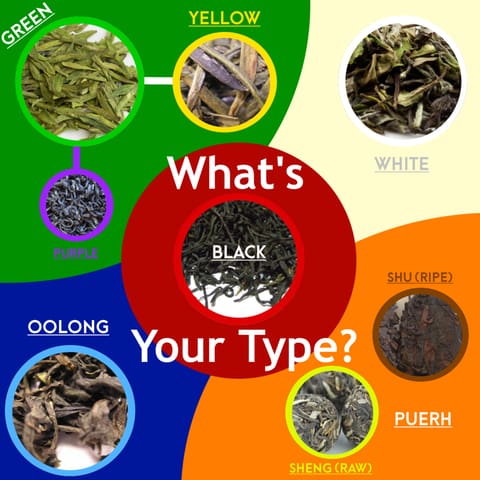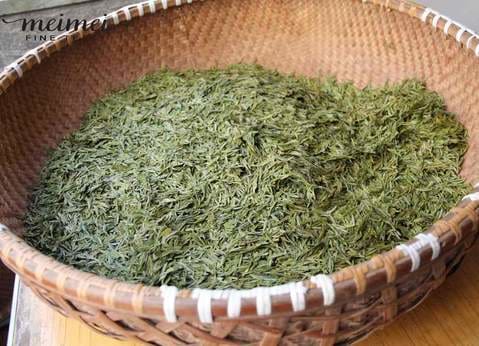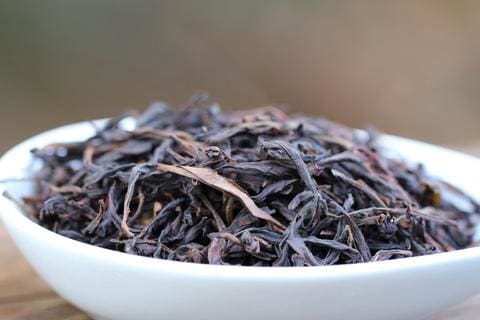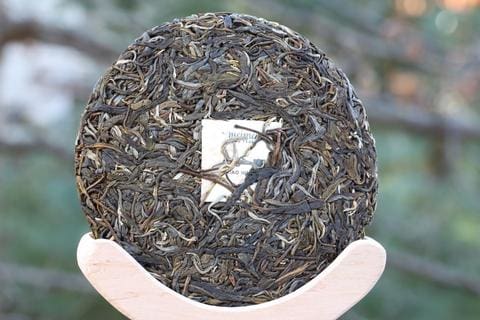
The Colors of Our Teas – A Quick and Friendly Guide to Tea Types
Tea comes in all sorts of shapes, sizes, and colors, ranging from the ethereal and mysterious Moonlight White tea to the rich and earthy Lao Liu Bao dark tea. To appreciate the diversity of this amazing beverage, let’s take a look at some of the more well-known categories of Chinese tea.

Perhaps the two most common types of tea known in the West are green and black teas. We owe our familiarity with these tea types in part to their prevalence in even the least expensive of tea bags.
Green teas are made from tea leaves that appear as though they have been freshly, recently plucked. This is made possible by carefully and quickly exposing the leaves to heat that shuts down their enzymatic activity, the same activity that causes the leaves to start changing color if left alone. This enzymatic activity is also what causes your fruits — like avocado or banana — to start browning. Between the chlorophyll content and other phytochemicals, one can find an infusion that varies anywhere between almost clear to deep green.
Black teas are at the opposite end of the enzymatic spectrum from green teas. Whereas the purpose of creating green tea is to stop enzymatic activity, when making a black tea, an artisan generally aims to push it to its limits. This is achieved through bouts of roasting and intense efforts to tear, crush, and bruise the leaves. The result is a much, much darker infusion that has a heavier flavor with colors that can range from bright red to dark brown.

Within the category of green teas is another kind of tea that probably deserves a class of its own, yellow tea. They are associated with the category of green teas in the graphic above because they are crafted very similarly to green teas and even share in similar flavor profiles.
The most important difference between green tea and yellow is that crafting yellow tea requires an extra, labor-intensive step that causes the tea to oxidize a little longer than green tea. Because of this additional process, yellow teas tend to be mellower and sweeter than green teas, and they are more resilient in terms of shelf life.
In contrast with yellow tea, purple teas are a little trickier to classify, making up a kind of misfit category of tea. It’s technically a green tea. In fact, what gives purple tea its color is an unusually high amount of a naturally-occurring pigment known as anthocyanin, the same pigment that makes blueberries blue and black rice purple.
In light of the above, it might be best to think of “purple” as more of a “bolt-on” property to teas, as purple tea can be crafted into any kind of tea. After tasting different kinds, we really fell in love with these Long Yuan Purple Buds green tea. If you’ve never had the opportunity, this is a perfect place to start in order to see what’s so different about purple tea.
Thanks to the rise in popularity of loose leaf teas, more people have started to become familiar with white teas and oolong teas as well. Unlike green and black teas, the first step in crafting a white tea is to naturally whither the leaves. This usually means placing the tea leaves in an area that allows the sun to dry them out. Unfortunately, machine withering with heated blowers is becoming increasingly popular, but we always choose our white teas are made in accordance with traditional methods.

The oolong category of teas makes up some of the most diverse and flavorful teas on the planet. The reason for this has much to do with the fact that there’s a much broader range for what counts as an oolong.
Whereas green teas are not oxidized at all and black teas are fully oxidized, oolongs can lie anywhere between those two extremes. This is why some of them (such as Floral Tieguanyin) tend to look as green as the most vivid of green tea leaves while others (such as ) can look almost as dark as a black tea.
Finally, there are the highly sought-after puerh teas, prized for their complex flavors and shelf lives
One type of puerh, known as sheng puerh or raw puerh, is crafted similarly to green teas. It is usually pan-fired, sun-dried, and then pressed into cakes with the intent that they be stored for aging. Although these teas develop incredible depth of flavor over time, they can and are enjoyed as early as one desires.

Another type of puerh, known as shu puerh or ripe puerh, is forced to mature and ferment at a faster rate of speed by piling up the tea leaves and then monitoring them in a controlled environment that has a temperature and humidity level perfect for aging. Once they are ready, they are then pressed into cakes, awaiting enjoyment by the seasoned tea drinker. Shu puerhs tend to be darker, heartier, and earthier in flavor than sheng puerhs, which are generally crisper and fruitier.
Now that you’ve seen the color of our teas, what’s your type?
